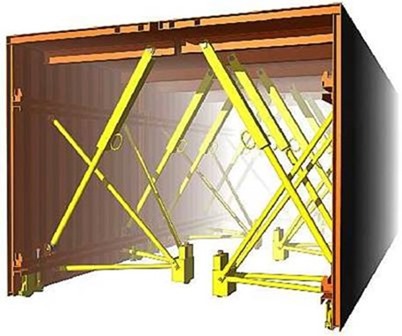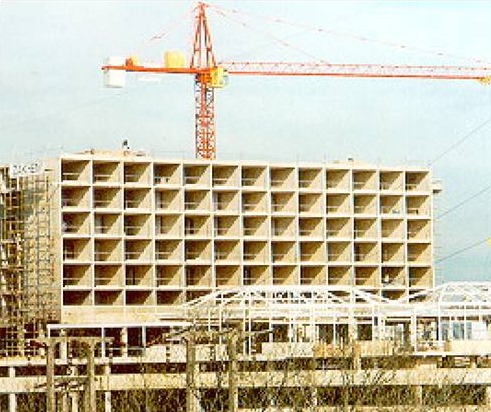
Tunnel Form Construction Technique was invented over 50 years ago. The use of tunnel-form produces high quality monolithic structures. It eliminates the use of any subsequent wet trades (Plastering etc). It is basically an operation to cast walls and slabs in one operation in a daily cycle. This technique is highly systematic, earthquake proven and provides an ideal solution to the critical problem of sound transmission. It gives a sound reduction of 50 decibels.
Tunnel form is widely used in the construction of cellular structures with high degree of repetition such as:
- Prisons
- Hotels
- Student Accommodation (Hostels)
- Private Housings
- Commercial Developments

It reduces the heating costs by providing “Thermal Mass” and speeds up the building process. However, specialist contractors with tunnel-form experience is high recommended in order to tailor the design to suit best construction method.
Tunnel formwork come in half units and in the form of an inverted “L” which are bolted together at the top to form each tunnel. The inbuilt wheels and the jacks help the formwork move in and out of the position and adjusted to the final height.
Tunnel Form Construction Technique :-
The factory-made steel formwork can be re-used up to 600 times and it can suit a variety of module sizes. This makes the method of construction very versatile and extremely economical.
Tunnel-form work allows a 24-hour construction cycle to be achieved and thus the buildability of in-situ concrete is improved by choosing this type of formwork.
In practice, when the two halves are bolted together, the tunnel formwork will appear like the following figure.

The Casting Process of Tunnel Formwork:
1) Stage One: Prefabricated Wall reinforcement is placed by crane along the entire wing prior to casting the kickers (used to position wall formwork).

2) Stage Two: Two and a half tunnel is craned into place, bolted together and ties are added.

3) Stage Three: The wall concrete is poured.

4) Stage Four: The slab reinforcements are fixed

5) Stage 5: The slab concrete is placed. The formwork system provides for a pour to be wrapped in tarpaulins and for the use of butane heaters to maintain a sufficiently high temperature for the concrete to reach its striking strength overnight.

6) Stage 6: The tunnel-forms are removed next day.

7) Stage 7: The process is repeated for the next two bays.

Tunnel form can produce strong and durable in-situ cellular structures. This method of construction can achieve time savings up to 25% with cost savings of 15%.
Since the concrete finish is very good, the requirement for post construction trades such as plasterers and electricians are greatly reduced.

